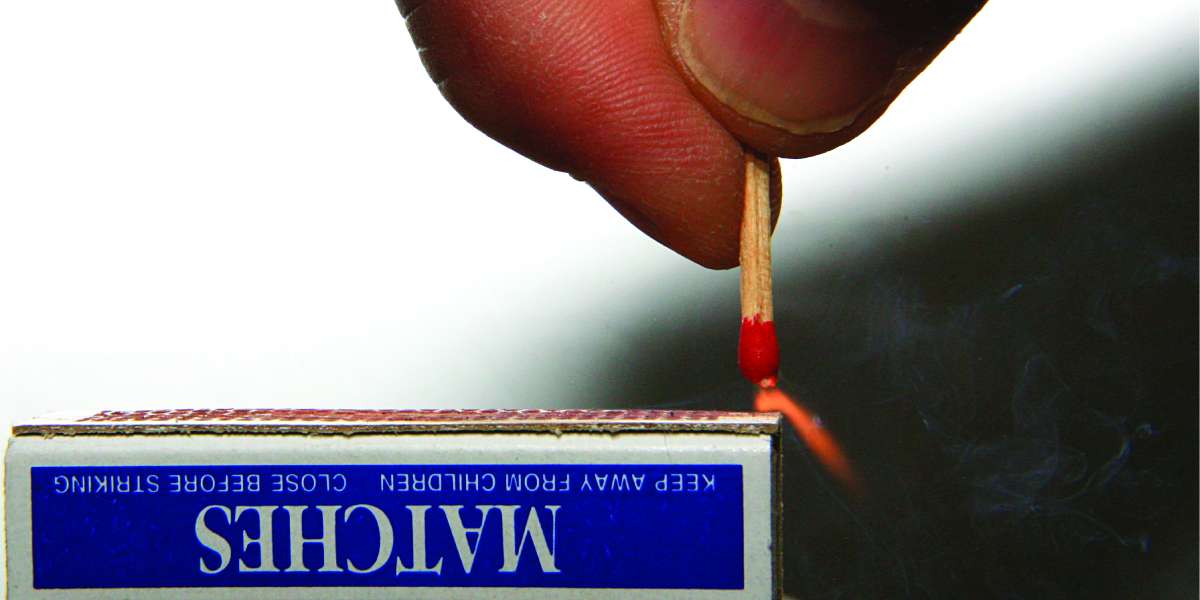Chapter 4: Matter and its Properties
Enhanced Introductory College Chemistry
by Gregory Anderson; Caryn Fahey; Jackie MacDonald; Adrienne Richards; Samantha Sullivan Sauer; J.R. van Haarlem; and David Wegman;
Chapter Contents
Except where otherwise noted, this OER is licensed under CC BY 4.0
Please visit the web version of Enhanced Introductory College Chemistry to access the complete book, interactive activities and ancillary resources.
In this chapter, you will learn about
- The differences between chemical and physical properties
- Quantifying energy contained within chemical bonds and reactions
To better support your learning, you should be familiar with the following concepts before starting this chapter:
- The periodic table

Chemical reactions, such as those that occur when you light a match, involve changes in energy as well as matter. Societies at all levels of development could not function without the energy released by chemical reactions. In 2012, about 85% of US energy consumption came from the combustion of petroleum products, coal, wood, and garbage. We use this energy to produce electricity (38%); to transport food, raw materials, manufactured goods, and people (27%); for industrial production (21%); and to heat and power our homes and businesses (10%).[1] While these combustion reactions help us meet our essential energy needs, they are also recognized by the majority of the scientific community as a major contributor to global climate change.
Useful forms of energy are also available from a variety of chemical reactions other than combustion. For example, the energy produced by the batteries in a cell phone, car, or flashlight results from chemical reactions. This chapter introduces many of the basic ideas necessary to explore the relationships between chemical changes and energy, with a focus on thermal energy.
The great distances between atoms and molecules in a gaseous phase, and the corresponding absence of any significant interactions between them, allows for simple descriptions of many physical properties that are the same for all gases, regardless of their chemical identities. As described in the final module of the chapter on gases, this situation changes at high pressures and low temperatures—conditions that permit the atoms and molecules to interact to a much greater extent. In the liquid and solid states, these interactions are of considerable strength and play an important role in determining a number of physical properties that do depend on the chemical identity of the substance. In this chapter, the nature of these interactions and their effects on various physical properties of liquid and solid phases will be examined.
Scientists in Action: Dr. Constantine Alberga Campbell

Born in Jamaica, Dr. Constantine Alberga Campbell is one of the leading soil scientists in Canada. His research centered on agricultural dryland soils and led to more productive, profitable and sustainable farming. His findings were presented in manner that allowed industry and producers to understand and apply the knowledge. Dr. Campbell was among the first to radiocarbon date soil organic matter. His published work in 1967 is cited as a landmark work. Read more about Constantine Alberga Campbell [New Tab].
Source: Constantine Alberga Campbell. (2010, December 15). Science.ca.
Attributions & References
Except where otherwise noted, this page is adapted by JR van Haarlem from “Chapter 8 Introduction” and “Chapter 10 Introduction” In General Chemistry 1 & 2 by Rice University, a derivative of Chemistry (Open Stax) by Paul Flowers, Klaus Theopold, Richard Langley & William R. Robinson and is licensed under CC BY 4.0. Access for free at Chemistry (OpenStax)
- US Energy Information Administration, Primary Energy Consumption by Source and Sector, 2012, http://www.eia.gov/totalenergy/data/monthly/pdf/flow/css_2012_energy.pdf. Data derived from US Energy Information Administration, Monthly Energy Review (January 2014). ↵

